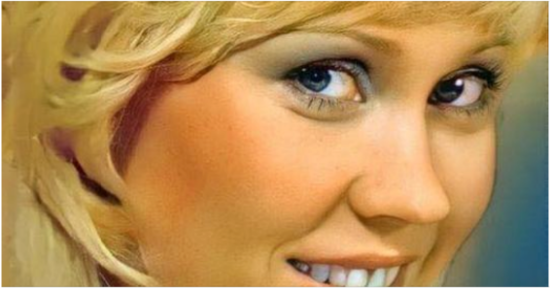One of the most illustrious bands in history, ABBA is well known today. The Swedish quartet continues to enjoy international acclaim today. Agnetha Faltskog, a member of the group, has decided to live a life away from the spotlight.
Faltskog was one of the lead vocalists in ABBA, along with Anni-Frid Lyngstad. She performed songs that made people want to dance and others that broke their hearts thanks to her legendary pop voice. But above all, she and the rest of the band went on to become some of the most fascinating musical icons ever.
Faltskog now leads a steady life in Sweden, but that doesn’t stop her from continuing to create music. She looks amazing now.

Few people can claim they haven’t heard of ABBA. It doesn’t matter if you were present for the first performance of Waterloo or if you won’t give birth for another 30 years. Today’s 10-year-olds probably dance as wildly as anyone ever did when they hear the band’s music.
It’s nearly impossible to pick just one favorite ABBA song. The fact that there is an ABBA song for every moment of our lives, whether it be happy, sad, inspiring, or regretful, is probably why they became such global superstars.
The fact that all of ABBA’s members essentially vanished after their final album is one of the group’s more distinctive features.
So what happened to her after ABBA broke up? And how did she initially become a part of the group? This is Agnetha Faltskog’s admirable tale.

On April 5, 1950, Agnetha was born in Jönköping, Sweden. She was the first of two daughters born to Birgit Margareta Johansson and department store employee Knut Ingvar Fältskog.
Agnetha Faltskog has always had a passion for music. She had talent, and some of her favorite musicians included Tom Jones, Petula Clark, and Dusty Springfield.
A song about two little “trolls” was written by Faltskog when she was only five years old. She began taking formal piano lessons when she was eight years old and would frequently go to her neighbor’s home to practice. She performed in the local church choir as well.
With her two childhood friends, Faltskog started the band The Cambers in 1960 when she was just 13 years old. They only performed a few small shows in the neighborhood before she decided it was time for something else two years later.
Agneta became a member of the Swedish folk band Bernt Enghardt. Swedish dance music was played as the band made its way around Sweden.
“They had a singer named Agneta before me that quit,” Agnetha recalled. “They had printed posters looking for a new singer, and when they found me and after I auditioned, it was a big plus that I was named Agnetha as well.”

Faltskog was on tour with Bernt Enghardt while also working as a telephonist for a car company, but her circumstances weren’t ideal.
She arrived home after midnight, “around two or three,” and was scheduled to report to work shortly afterward. She even passed out at the car company one day, and her mother gave her a choice.
“‘Either you work as a normal person or you dedicate fully to singing’,” Agnetha recalled her mother saying. “It wasn’t a tough choice, I wanted to keep singing.”
Before departing to launch a solo career, Agnetha sang with the Bernt Enghardt band for another two years. She made the decision to change her last name to include a “h” after releasing her debut solo album.
Faltskog’s first single, Jag var s kär [I Was So In Love], was made public when he was just 17 years old. As soon as it reached No. 1 on the Swedish sales chart in 1968, a man by the name of Bjorn Ulvaeus heard it on the radio.
“I remember hearing Agnetha’s first single on the radio. There was something so special about her voice and the fact that she had written that song herself – it was magic,” Benny said in the BBC documentary Agnetha: Abba and After.

Benny Andersson added: “She did a couple sort of back to back, both good songs. She did some good stuff, you know, singing in harmony with herself.”
Now, Bjorn and Benny were gifted musicians who had previously collaborated. Following the release of her debut single, Agnetha’s career took off, and soon she was scheduled to perform alongside Bjorn Ulvaeus.
“We did a TV show together and she and I had a duet together. That was a magical moment,” he recalled. “That evening was when it actually happened, we fell in love and then shortly after that we were a couple.”
While Agnetha and Bjorn were performing together, Benny fell in love with Anni-Frid Lyngstad, another performer.
Despite being four extremely talented musicians in the same space, they initially had no plans to form a band. The 1970 Bjorn and Benny album Lycka [Happiness] featured Anni-Frid and Agnetha as background singers.

Ring, Ring gained popularity in a number of European nations where it persisted. The group was starting to gain recognition everywhere at this point. They would achieve their goals one year later, in 1974.
Once more, they competed in Melodifestivalen, but this time they used the song Waterloo. Before they performed at the Eurovision Song Contest in Brighton, they decided that their group would have a new name, altering the course of music history. They had won the Swedish qualification.
Agnetha had other thoughts while ABBA went on to win the Eurovision Song Contest, which many people believe to be the most iconic moment in ABBA history.
She married Bjorn Ulvaeus in 1971, and the couple welcomed Linda, their first child, in 1973. Agnetha was expecting while this ABBA mania, which was growing daily, was in full swing.
Having children while growing to be one of, if not the largest, groups on the planet was undoubtedly difficult.
Agnetha admitted that, given that she was only a few months away from giving birth to Linda, she was actually kind of relieved that Ring Ring didn’t help them win the Melodifestivalen.
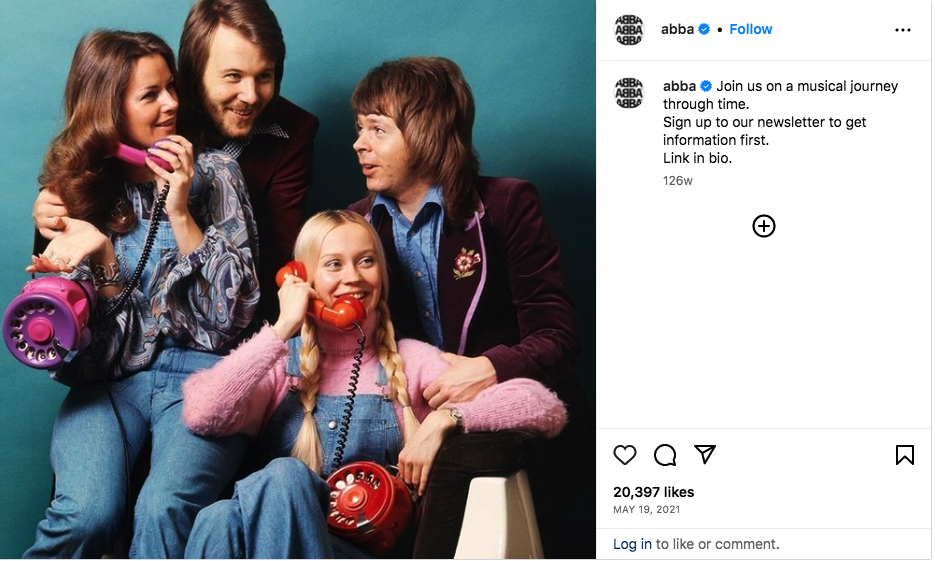
“I managed to combine marriage, giving birth, divorce and a world-wide success during the 10-12 years we were doing ABBA,” Faltskog said. “It wasn’t easy, I can tell you that. It wasn’t easy leaving home, especially since dad [Bjorn] was away as well. We left our children but we made sure that they were being taken care off.
“We weren’t away as much as one might think. If we were away for 14 days, we decided that we’d be home for 14 days as well.”
All of ABBA’s members experienced incredible success on a global scale, but Agnetha continued to have trouble with having to leave her kids.
She even told herself that she might just leave the group because it was so difficult for her.
“It was tough times, ‘can I handle this or should I leave? How can we solve this?’” I said that we had to be at home the same amount of time we were out touring,” Agnetha continued.
“I was never going to leave [the group], but it was something I could tell myself just to manage, to get everyone to understand how tough it was.”
The Battle of Waterloo was a huge success. However, it was only the start of a brand-new era in music history. It took some time before ABBA had their next big hit because placing first in the Eurovision competition did not ensure success after the competition.
They then released the song SOS, which was also a big hit, 18 months later. The song Mamma Mia, which was included on the same album as ABBA from 1975, reached the top of charts all over the world.
It held the No. 1 spot for 10 weeks in Australia, and ABBA fever “down under” was insane. Australia, one of the ABBA fanatic nations, actually gave the group a total of six Number One hits.
ABBA released several albums over the ensuing years, and the hits just kept on coming. Songs like Fernando and Dancing Queen quickly became popular; the latter was the only No. 1 single for the group in the US.
At this point, ABBA had established themselves as one of the most well-known bands in the world, and for good reason.

In 1979, ABBA’s sixth album was being released as Agnetha and Bjorn were divorcing. It wasn’t ugly, though, and the band carried on with their work as professionals.
Their divorce was the subject of the song The Winner Takes It All, which Agnetha performed.
“The fact he wrote it exactly when we divorced is touching really. I didn’t mind,” Agnetha said. “It was fantastic to do that song because I could put in such feeling.”
“I didn’t mind sharing it with the public,” she added. “It didn’t feel wrong. There is so much in that song.”
Agnetha discussed her divorce from Bjorn in a 2013 interview, she claimed that their relationship is cordial, if only for the benefit of their two children.
“Bjorn and I have dealt with the heartbreak,” she said. “It’s amicable. In love there are so many ups and downs but I remain optimistic. I haven’t closed any doors.”
Anni-Frid and Benny, who wed in 1978, divorced two years later as well. The band believed they were pretty much finished in 1982.
Solo career
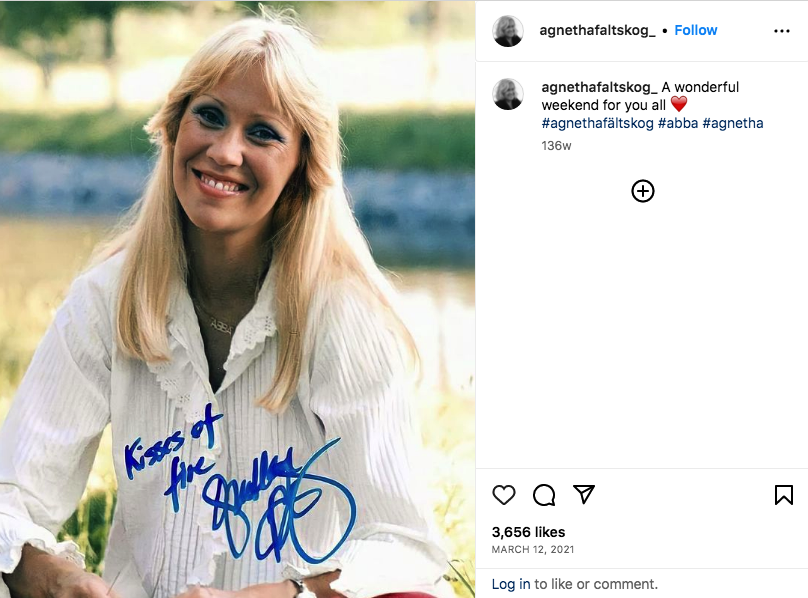
They released The Singles – The First Ten Years, a new album that included two brand-new songs in addition to all of their greatest hits. However, as New Years Eve that year approached, ABBA made the decision to take a break.
The group asserted that they could always reunite after a few years if they so desired. But it never took place.
Agnetha chose to pursue a solo career instead. She released a number of songs, with the wonderful Wrap Your Arms Around Me being considered her three 1980s albums’ biggest hit.
After some modest success, she made the decision to fade from view. Agnetha was a very private person who preferred to live a quiet life. She still resides on an island off the coast of Stockholm, Sweden. She still has a stunning appearance!
Faltskog made the decision to leave ABBA and her prominent career behind. But many people perceived her actions as being very enigmatic.
“I’m not very mysterious”
She came across as quite mysterious in her decision to isolate herself. Agnetha Faltskog, however, was unhappy with that impression.
“I have been described as very mysterious, but I’m not,” she mentioned. “I think I’m just very grounded. My life contains so many other things; I have my children, my grandchildren, my two dogs, and a big place in the country. I have my own life.”
Three grandchildren now call Agnetha their grandmother. They are still largely unaware of their grandmothers’ former fame as a global icon, though.
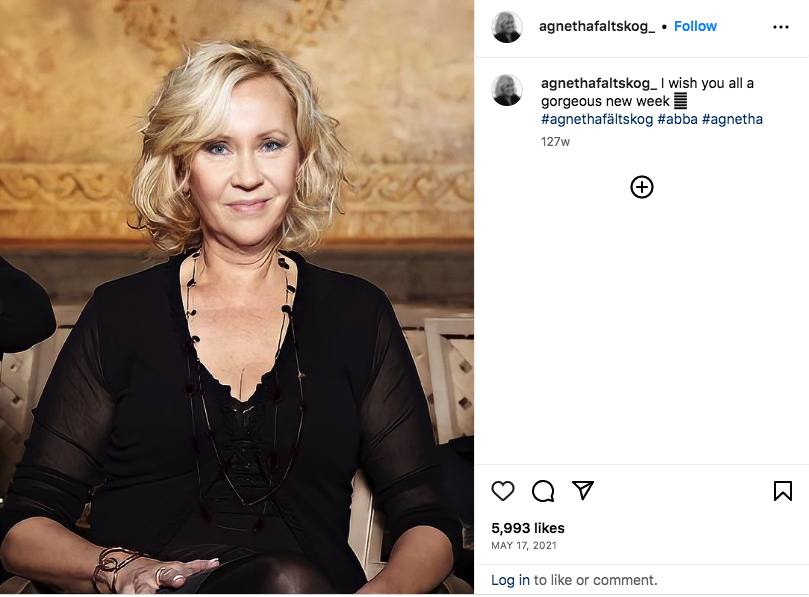
“I spend a lot of time with the grandchildren,” Faltskog said. “They love it when we sing together. It’s fantastic to hear them and they really can sing. I don’t talk to them so much about Abba and the past, but as they get older they will become more aware. Already the eldest one, Tilda, knows a little bit more.”
Agnetha Faltskog is thought to be worth about $20 million. With ABBA rumored to be getting back together, that number may soon rise.
Faltskog’s most recent album was released in 2013, but Bjorn Ulvaeus has just said that more ABBA music will soon be available.
“There will be new music this year, that is definite, it’s not a case anymore of it might happen, it will happen,” Ulvaeus explains.
“We’re really, really good friends. The four of us stand in the studio for the first time in 40 years and there’s just something in knowing what we’ve been through. It’s hard to describe, but there are such strong, strong bonds between us.”
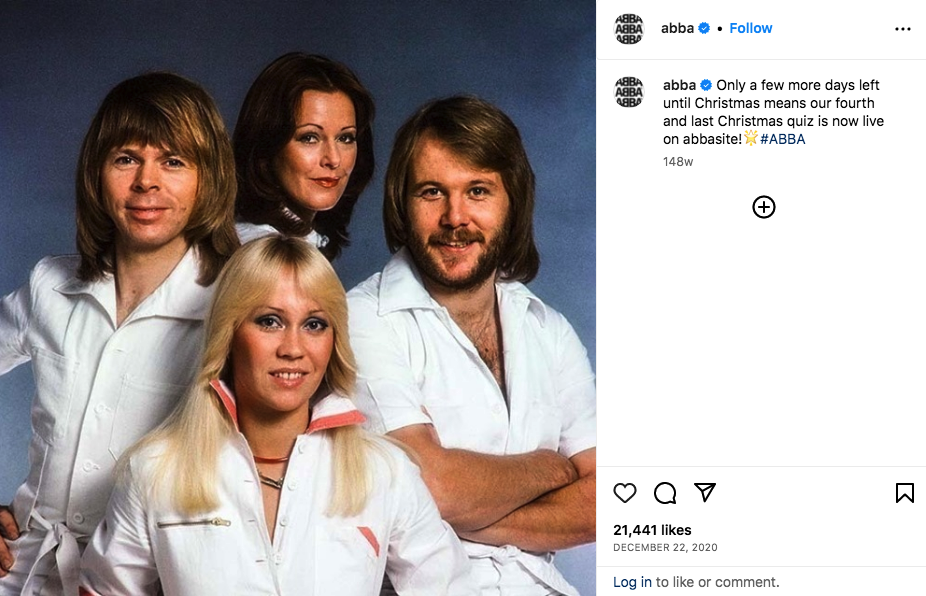
Agnetha Faltskog was a true superstar SHARE this article if you agree.
